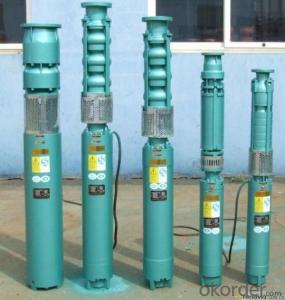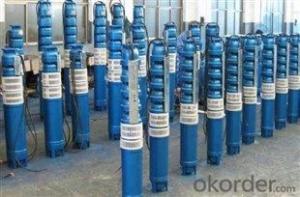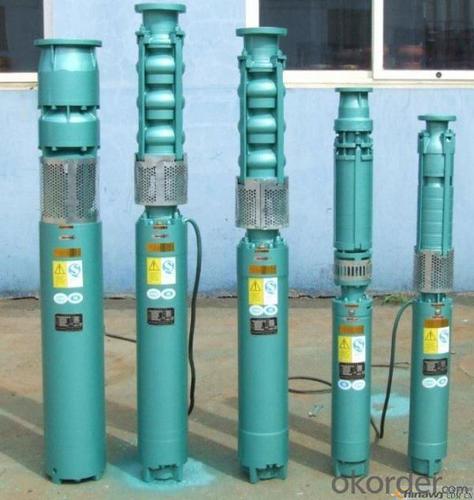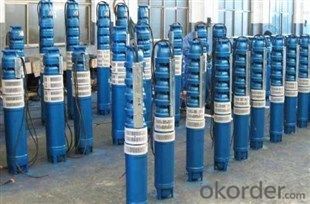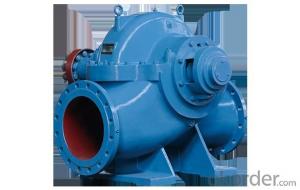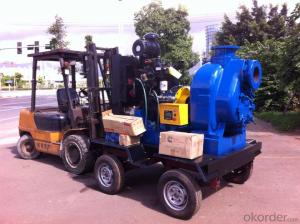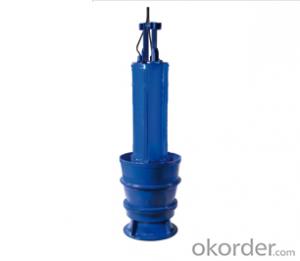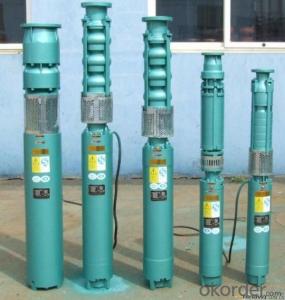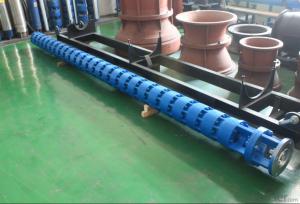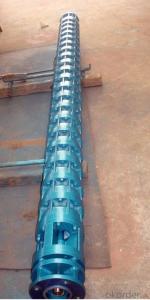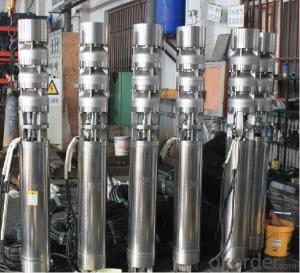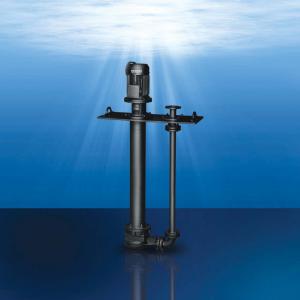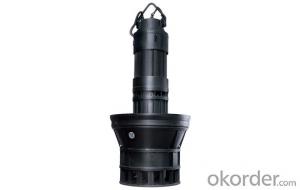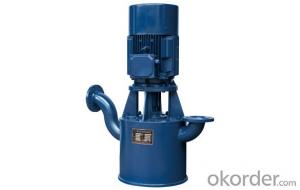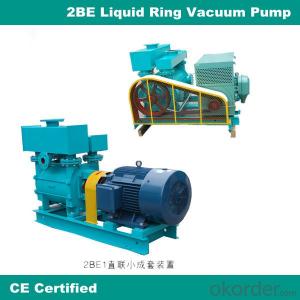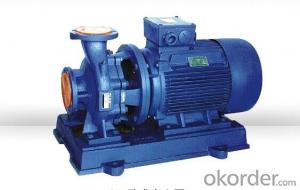QJ Vertical Deep Well Submersible Centrifugal Pumps
- Loading Port:
- Shanghai
- Payment Terms:
- TT OR LC
- Min Order Qty:
- 1 unit
- Supply Capability:
- 3000 unit/month
OKorder Service Pledge
OKorder Financial Service
You Might Also Like
1. Product overview :
QJ series deep well submersible waterpumps are widely used in farm irrigation, sprinkler irrigation, getting water from well, water supply and drainage system for industrial and civil building, water diversion project in hilly and mountain areas water drainage project in at low-lying areas, water supply and drainage in urban and rural's mining enterprisesand various ther kinds of water conservancy facilities. Its features are that the Motor and pump are assembled into a whole, so that it is simple in structure, convenient to assemble and disassemble, easy to use and maintain safe to operate. Otherwise, it covers an small area and does not pollute water.
2. Operation parameters :
(1). Flow range : 10-500 m3/h
(2). Lift range : 10-600m
(3). Applicable well diameter : φ175-φ400mm
(4). Diameter scope:φ32—φ203mm;
(5).Temperature range: -15—100°C.
3. QJ using condition:
(1) 380V voltage deviation is no more than ±5%,frequency is 50HZ, three-phase power deviation is no more than ±1%.
(2) Motor cavity must be filled with water.
(3) The first stage impeller of the pump should be more than 2mm below the moving water surface, pump unit should be less than 70m below the static water level.
(4) The distance from the motor bottom to well bottom must be more than 3m.
(5) Water temperature should be no more than 20°C.
(6) Sand content of the water ( by mass) should be no more than 0.01%.
(7) PH value of water 6.5-8.5.
(8) Hydrogen sulfide content of the water should be no more than 1.5mg/L.
(9). Chloride ion content of the water should be no more than 400mg/L.
(10). Water yield of water source should ensure the requirements of pump continuous working.
4. Material
Impeller: Cast iron HT200,or stainless steel
Pump bowl: Cast iron HT200,or stainless steel,such as ss304 ss3016
Pump shaft : Cold-drawn steel with chrome plating,or stainless steel SS304 SS316
Motor Seal: Rubber O-ring seal,mechanical seal
Motor regulating sleeve: Rubber
5. FAQ
(1). Can I get trained on CNBM products?
Yes, we provide training courses in our factory (products, general and specific pump technology, hydraulics, and practical applications). Please consult your sales manager or get in touch with our headquarters for more information.
(2). Are your pumps cheaper than those of your competitors?
CNBM aims to give its customers the highest standards of quality and service and delivery times, all at a reasonable price.
(3). How long is your warranty?
Unless otherwise expressly authorized in writing, by specifying a longer period or different conditions, CNBM states that, for a period of twelve (12) months from delivery date, all Products supplied are free from defects in materials and workmanship, and conform to the applicable specifications. Either the delivery documentation or the invoice must be provided to prove delivery date. In absence of such documents, the production date appearing on the product label may suffice.

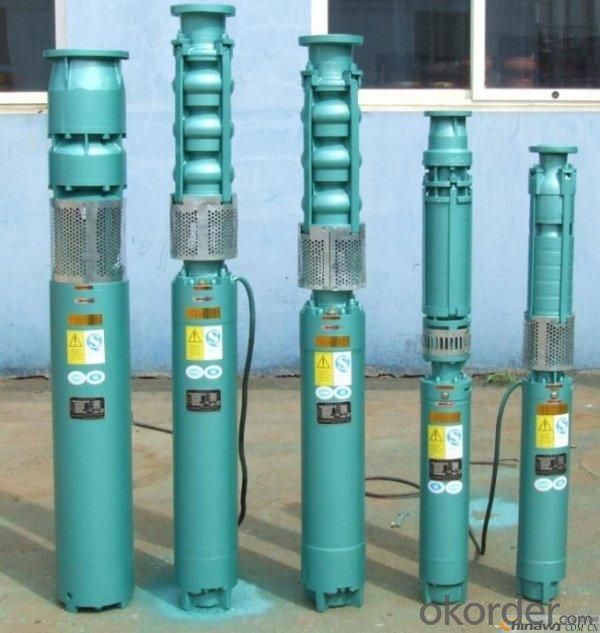
- Q: Fire hydrant pump button, under what circumstances do not need to install?
- The installation of hydrant pump buttons depends on the type of water supply:(1) municipal water supply; (in this case, do not have to install)(2) there is a fire pump; (must be installed)
- Q: What are the basic technical parameters of the pump?
- The effective power of pump and output power, with Pe said. It is the effective energy per unit time from the pump in conveying out liquid obtained in the pump. Because the lift refers to the effective energy, pump output unit of heavy liquid obtained from the pump so that the product of head and the mass flow rate and the acceleration of gravity. Is to obtain the output from the pump in unit time of liquid effective energy - efficient pump power: Pe= P gQH (W) = QH (W) - P - density of liquid pumping (kg/m3); severe gamma - pump for transporting liquid (N/m3) - Q (pump flow; m3/s; H) - pump head (m); G (m/s2). The acceleration of gravity P axle power and effective power Pe is the difference of power loss in the pump, the size of the pump efficiency to measure the efficiency of the pump. As the effective power and shaft power ratio, with ETA said. Selection of related pumps:
- Q: Operating procedures for measuring pumps
- start-up1. Adjust the stroke indication to zero by adjusting the nut or handle with the rotary stroke.2 open the outlet valve.3. Open the inlet valve, pump, exhaust from the high point, exhaust from the relief valve, the breather valve.4, point motor, check the operation of the pump.5. Start the motor.6, without pressure on the premise, every 15 minutes to improve the stroke 20%, if there is no pressure, do not substantially improve the stroke.Note: (1) whether the sound or vibration of the pump is abnormal (2), whether the stroke adjustment is automatic or not
- Q: What are the characteristics of a vertical multistage centrifugal pump?
- A liquid that is primarily diluted, clean, non corrosive, explosive, or similar to water but contains no solid particles or fibers. Because of its high flow and large lift, it is widely used in fire fighting, water supply and air conditioning unit cooling water transportation in high-rise buildings.
- Q: Pump operator's responsibility 10Sharing the rules, responsibilities, etc..
- 1., consciously abide by the traffic control department management rules, to achieve civilized driving, safe driving.2. responsible for the daily maintenance, cleaning and cleaning of the pump truck, and ensure the equipment is in good condition.
- Q: I want to know the concrete under 60 type pump performance, it is mainly the pump long spiral bored piles, such as the diameter of the pump, transportation distance, pumping height and so on, thank you!
- Maximum theoretical vertical transfer distance is m 270Maximum theoretical level conveying distance m 1200Distributing valve form S pipe valve (whole casting)
- Q: Pneumatic diaphragm pump compressed air pressure is 4 kg, the discharge pressure is how big?
- Have to know the ratio, pneumatic pump, if high pressure, you can have 2:1,3:1
- Q: Why can't the centrifugal pump pump the vacuum?
- Characteristic equation of centrifugal pumpStudy the effect of fluid on centrifugal pump to obtain energy.The experimental condition of u is that the ideal fluid of unit weight bends the flow between blades at infinity.U investigated the mechanical energy balance of the fluid between the adjacent two inlet and outlet sections, that is, the relationship between theoretical pressure head and theoretical flow.
- Q: Because the water pressure of the booster pump is not enough, it can not work automatically. It can only be operated by hand. It is inconvenient to use.
- If the water pressure is not enough, the pump can not start, then it must be wrong. Because if the water pressure is not enough, the pump should be running automatically. It's just because the water pressure is not enough.
- Q: No negative pressure water supply equipment, both the main pump and auxiliary pump, power is not the same, how to choose the control cabinet?
- Non negative pressure variable frequency water supply means no negative pressure superposed water supply equipment. When running, it is connected directly to the water supply pipe. Always test the pressure of tap water pipe network and water supply pipe network pressure control system, when the water pressure is lower than the pressure required by the user, the frequency conversion device based on water automatically control the pump speed through the steady flow compensator of water balance, maintain a constant pressure water supply. In the multi pump system, the control system can automatically dispatch the water pump according to the water consumption. It can balance the working time of the pump and ensure the pressure of the water supply. When the water supply pressure satisfy the required pressure, the system automatically stops the pump by the external water supply pipe network directly. CJWFG-DYG non negative pressure superposed water supply system:
Send your message to us
QJ Vertical Deep Well Submersible Centrifugal Pumps
- Loading Port:
- Shanghai
- Payment Terms:
- TT OR LC
- Min Order Qty:
- 1 unit
- Supply Capability:
- 3000 unit/month
OKorder Service Pledge
OKorder Financial Service
Similar products
Hot products
Hot Searches
